When you’re working your own land, there’s an inevitable moment when you find yourself butting heads with nature. You may discover a nasty poison ivy rash, a particularly troublesome patch of morning glory that you just can’t seem to eradicate, or a copperhead den smack dab in the middle of your field. But of all the unpleasant nature encounter stories that folks in my backwoods area like to swap over the fence, the one that seems to come up the most often is dealing with yellow jackets.
Perhaps it’s because of their habit of nesting in the ground, usually in pleasant, open fields. It’s all well and good if they do it in an undisturbed area at the edge of the woods, but it’s an entirely different matter when you “discover” an active nest with your push lawnmower, or while you’re tugging your chicken tractor into a new position. Yellow jackets don’t take too kindly to having someone stomp on their front door, and they express their displeasure vehemently with as many repeated stings to the shins and arms as they can manage.
If you find a yellow jacket nest on your land and need to remove it for the safety of your family and visitors, you don’t have to reach for a can of poison to get the job done. With some simple tools and patience, you can naturally and easily take out a nest. Read on to find out how.
A Natural Method For Yellow Jacket Nest Removal
Equipment: Clear glass jar/container, larger than the nest entrance.
- Cover the hole with the container.
- Pile dirt around the edges of the container to seal it.
- Check the container daily. Pile more dirt if it becomes loose.
- After the yellow jacket activity has died off, remove the container and fill the hole with dirt. This will prevent another nest from forming.
You can see photos and more detail about this later in the post. For now, let’s talk about why this method works.
Understanding Yellow Jackets
The first step to understanding yellow jackets is identifying them! Though your gut response upon seeing something buzzing may be to grab the flyswatter, not every yellow-striped flying thing is a yellow jacket, and none are worth blind fear.
The terms used to talk about yellow jackets are often used incorrectly, so don’t be surprised to find resources online using the terms wasp, hornet, yellow jacket, and bee interchangeably. Though they’re not bees, yellow jackets are called “meat bees” because of their carnivorous appetites.
Though they aren’t hornets (indeed, there is only one species of hornet in the United States, and it’s HUGE), they are sometimes called “ground hornets.” Calling them wasps is accurate, as they are part of that family, but not every wasp is a yellow jacket.
In fact, the term “yellow jacket” doesn’t even describe a single species—it’s a term used to talk about several species in the genus Vespula and Dolichovespula. Will you need to know all these terms for a test later? Of course not, but understanding what you’re seeing will hopefully take away some of the fear that these buzzing insects seem to inspire!
Identifying Yellow Jackets On The Homestead
The yellow jackets you’ll probably find on your homestead are typically the size of a honeybee, with the characteristic yellow and black stripes that lend to their name. And like bees, they nest in colonies—but that’s where many of the similarities end. Rather than creating their own hive structure from scratch, they most commonly nest underground, often reusing an abandoned burrow.
They aren’t fuzzy like honeybees or bumblebees, nor do they feature the flattened back leg to collect pollen. Though the adults feed on sugary food like nectar or fallen fruit, they are also voracious hunters, usually focusing on caterpillars and other leaf-eating larvae.
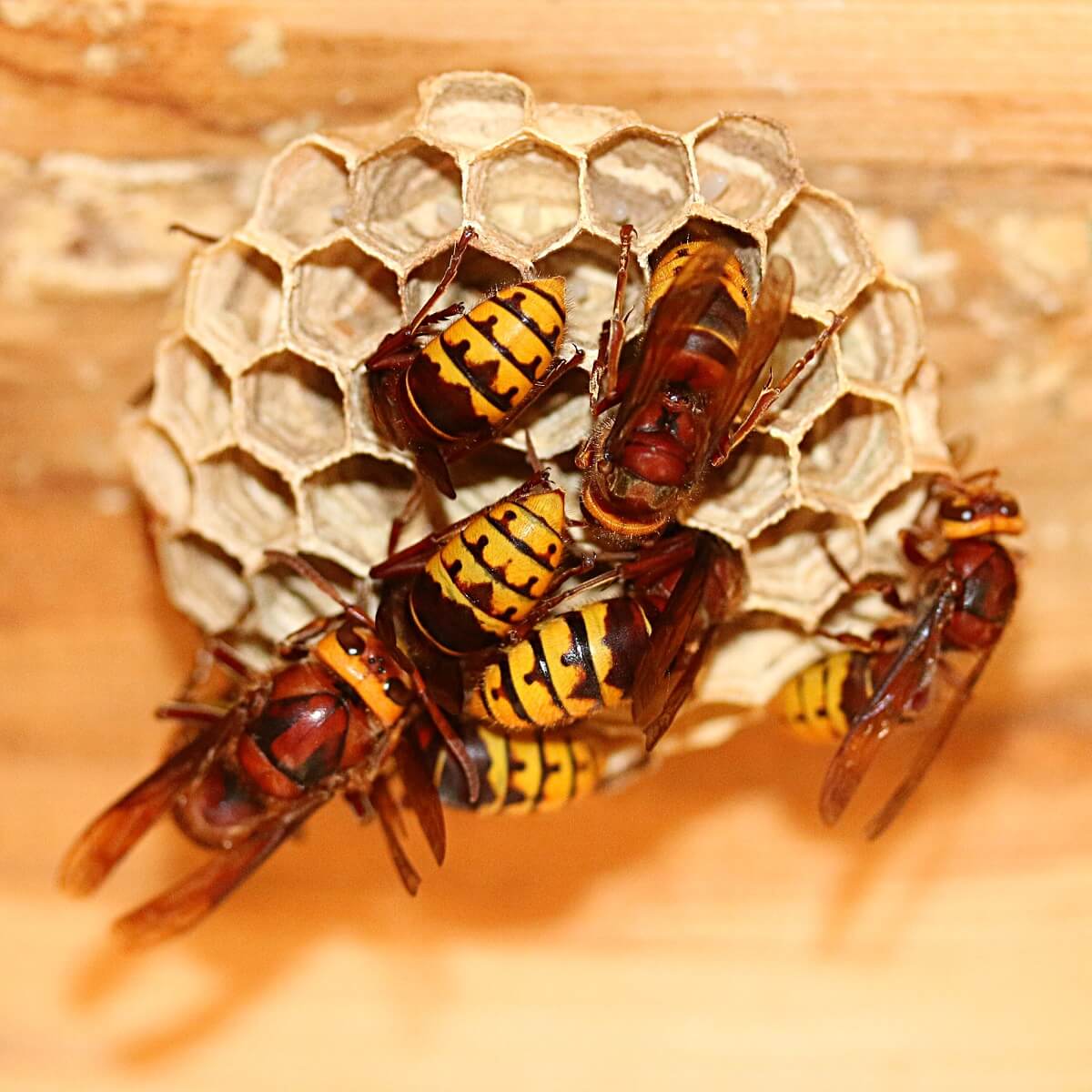
So, yellow jackets, even though they could certainly use some anger management therapy, do have a purpose. If you find a nest on your land, first consider whether it is worth the effort to remove it or if it would be beneficial to your land to leave it. If they nest in an area you seldom use, you may only need to mark the area—utility marking flags work nicely—and be sure to steer clear.
Though they’re not as lovely as butterflies or endearing as honeybees, these battle-striped jerks of the insect world still can have their own place on the farm. These wasps are excellent at tracking down many pests and caterpillars that would otherwise bother your gardens. They chew these crop-destroying larvae up to feed to their own larvae, ridding you of scores of garden problems for free.
So, what is a homesteader to do when an underground yellow jacket nest is found? There are several options. The first is to just leave it alone. These insects DO have a purpose, and if their nest is out of the way enough, you can mark it with a fluorescent flag and steer clear when trimming the grass.
https://www.instagram.com/p/BXyw3GXFppz/?tagged=groundhornet
But what if the nest is in a high-traffic area, like where your kids play, or in the middle of the path on the way to the barn? Sometimes, yellow jackets have just picked a bad place to nest, and for the good of the people in your home, they need to go before they do some serious damage.
Removing An Underground Nest
“Wait ‘till it gets dark, get you some gasoline and pour about a gallon in. Then, get a match, drop it in and run!”. This is my neighbor’s enthusiastic advice on how to remove yellow jackets.
But if you are trying to manage your land organically, if you have children about, or if you have free-range animals, probably the last thing you want to do is pour poison into the ground (or into your groundwater!). Additionally, poison is indiscriminate–you may take out more creatures than you intended! So if chemical control is unpalatably out of the question for you, just grab a jar and wait for nightfall…
https://www.instagram.com/p/eGqRWytnji/?tagged=groundhornets
Removing A Yellow Jacket Nest: With Photos
You can remove a nest with no toxins, no sprays, and no need to run to the store. All you need is a clear glass container, bigger than the yellow jacket nest’s entrance, and a handful of dirt. A large Pyrex container, half-gallon mason jar, or a big, empty peanut-butter jar will do the trick. It’s that simple.
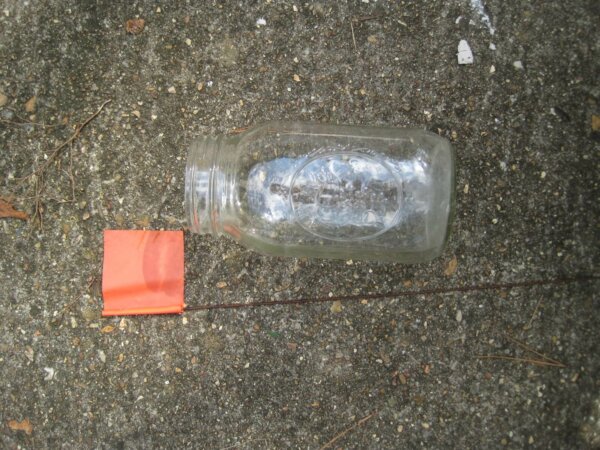
Though my neighbor’s incendiary advice is questionable, my neighbor was spot-on in understanding yellow jacket behavior. Yellow jackets are diurnal, meaning they are only active during the day. Once darkness falls, they all return from their foraging exploits and hide back underground until daybreak. When you need to treat a nesting area, wait until it’s dark, and there’s no visible activity in or out of the nest. You should then be able to do your work unhindered.
Cover the entrance of the yellow jacket nest with the mouth of the jar, then mound dirt around the edges of the jar—about an inch around the sides should do it.
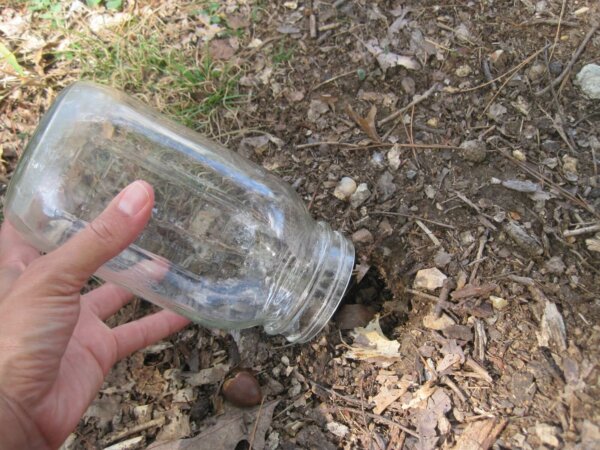
For extra effectiveness, try sprinkling ashes first—insects hate ashes—then cover the ashes with soil.
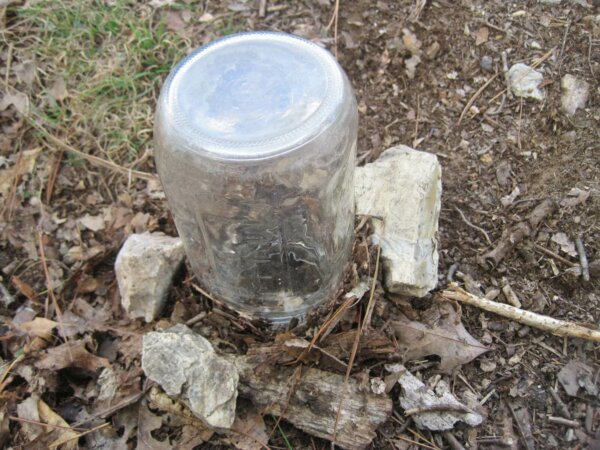
Gently press the soil around the jar to make sure that it is “sealed,” and mark the area with a fluorescent flag or some sort of marker. You’ll want to give the area some elbow room while the enraged yellow jackets wake up to your trap.
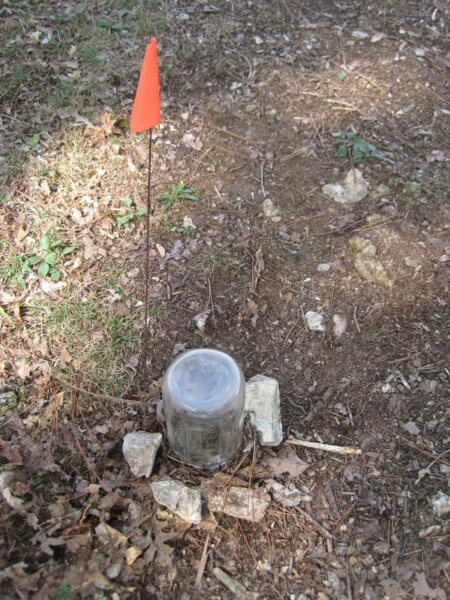
It may take a few weeks for the yellow jackets to die out. The first few days, they will fill the jar with a nightmarish swarm of activity. You may notice them trying to enlarge the opening of their nest as well. If they are able to dig free and get out of the jar trap, don’t fret—and certainly don’t try to fix it during the day! Just come back after dark and mound a few more handfuls of dirt around the jar.
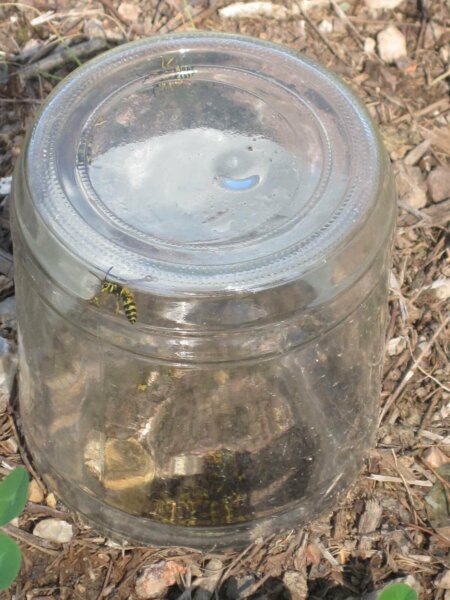
Eventually, though it may take more than a month, all activity should literally die down. As you watched the drama unfold in your trap, you may note that there are very few dead yellow jackets visible at the surface—I suspect that the living ones drag the dead ones down for food. Even after the angry swarm has stopped filling the jar, give the trap a few more days before you remove it. Then in the evening, with a spade, fill in the hole to prevent future nest-building.
https://www.instagram.com/p/BKgQv9NA_ax/?tagged=groundhornets
Voila! You have now safely and effectively removed an underground yellow jacket nest with no fire, no pesticides, no exterminator bill, and no threat to your personal safety. On the homestead, it’s never fun to have to kill something-—even when that something is a yellow jacket nest that probably gave you a few stings when you found it—but now you know how to do it quickly, simply, and effectively. With resourceful fixes like this in your back pocket, every homesteader can continue to solve daily problems with a bit of DIY ingenuity.



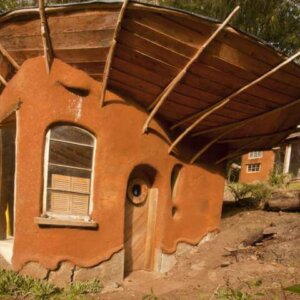


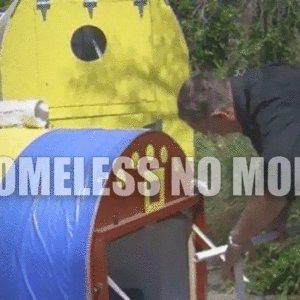
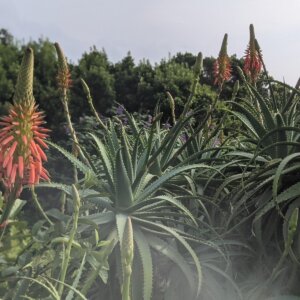

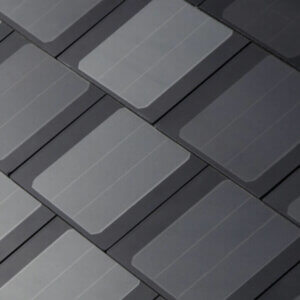


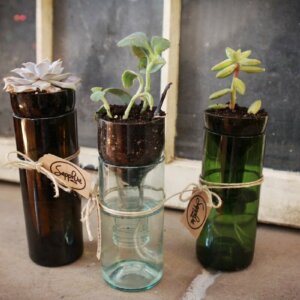
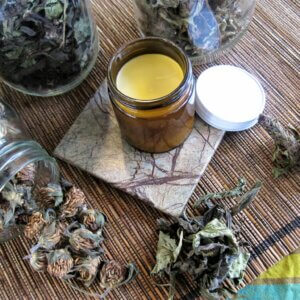
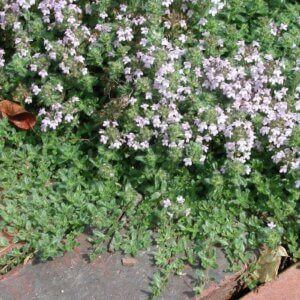


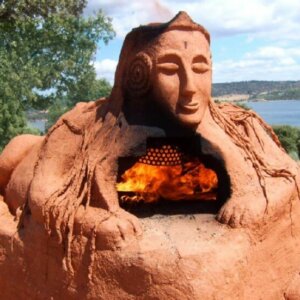





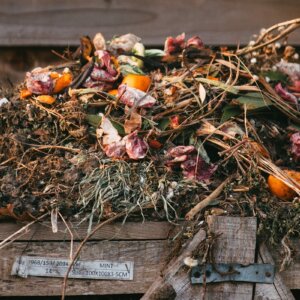
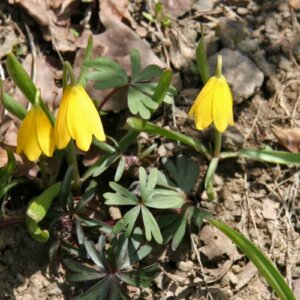



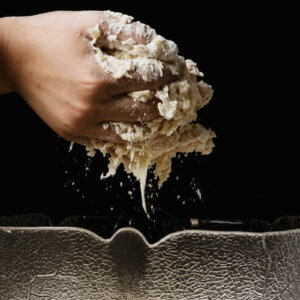

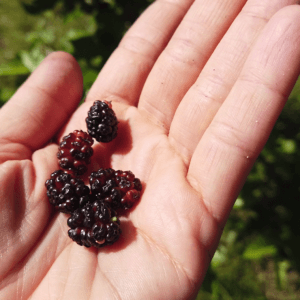
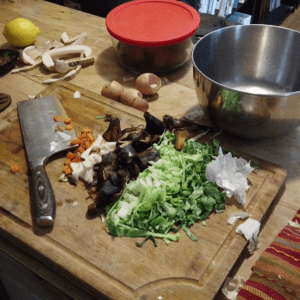
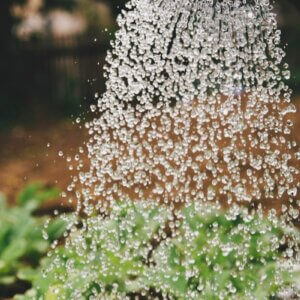

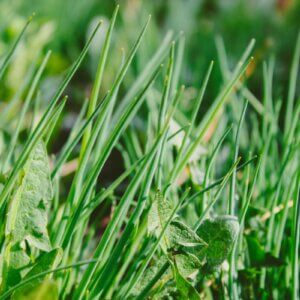
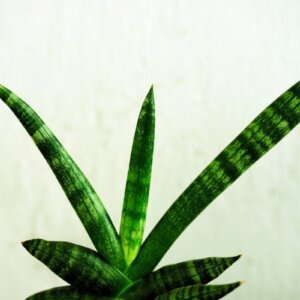

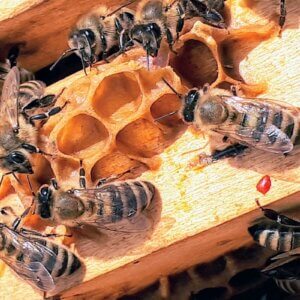
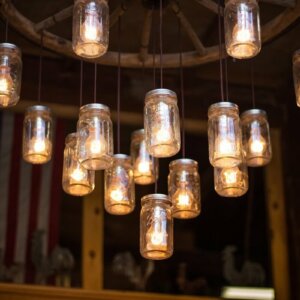


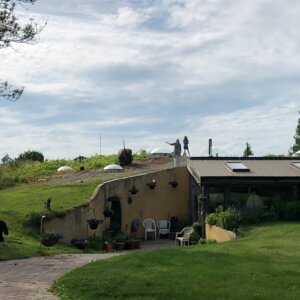
Thx.i have no clue how to find them in our small 39 acre tall grass prairie, but they wiped out two bee hives this year ?. I put up traps too
Oh man! That’s awful to lose hives to them–I want to get started with bees sometime soon, so I’ll keep that in mind. I didn’t know they did that! Hope the traps can help you–though I am really not a fan of trapping and killing indiscriminately, sometimes there’s necessary circumstances.
One more problem to solve: I have several houseplants in pots that may have become ‘homes’ for yellow jackets. Is there any way to get rid of the yellow jackets and bring the plants inside for the winter — safely? If it makes a difference, I am in zone 7B so we will have the requisite cold to eliminate the outdoor nests, but obviously that won’t work with houseplants. My husband says take cuttings to root and dispose of the rest, but I don’t care for that idea . . . suggestions? Or reference to somewhere I can perhaps eke out the info I need? // Many many thanks.